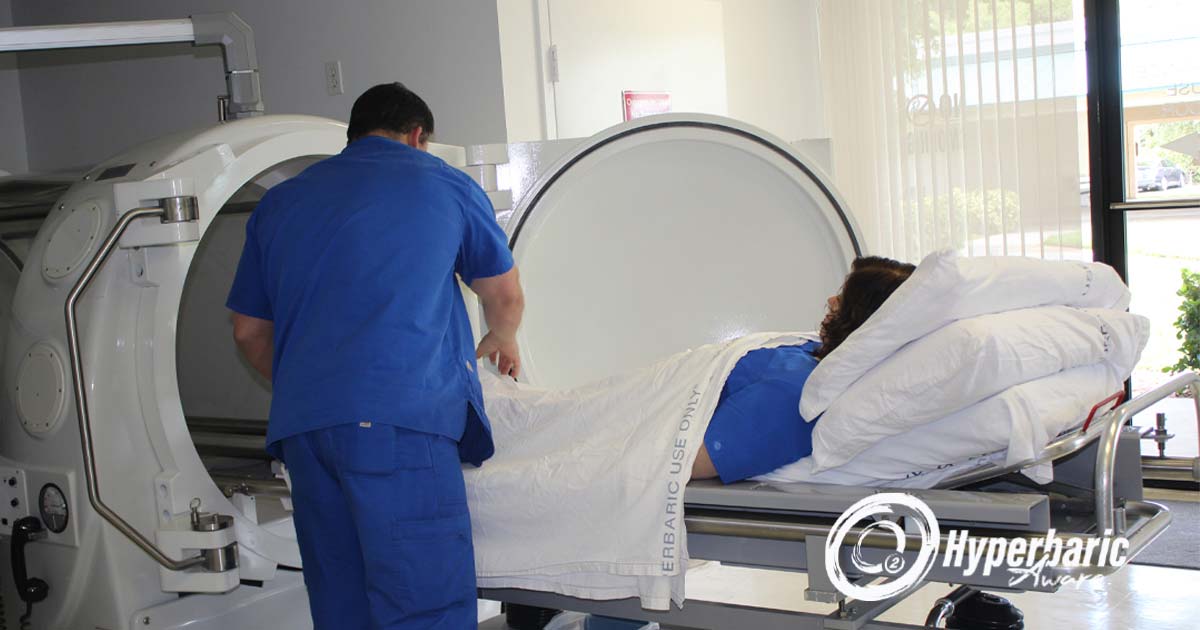Get The Facts About Hyperbaric Oxygen Treatment

Get The Facts About Hyperbaric Oxygen Treatment
Exploring the best treatment options for your chronic wounds
can be overwhelming. Ideal treatments are those that are the least invasive while providing the best long-term results. Patients are experiencing promising results with Hyperbaric Oxygen Therapy (HBOT)
.
What is HBOT?
Hyperbaric oxygen therapy is a medical treatment that involves breathing pure oxygen in a pressurized environment. Hyperbaric oxygen therapy is a well-established treatment for carbon monoxide poisoning and decompression sickness, a potential risk of scuba diving. Other conditions treated with hyperbaric oxygen therapy include serious infections, bubbles of air in your blood vessels, sudden sensorineural hearing loss, and wounds that may not heal as a result of diabetes, radiation injury, or a compromised flap or graft.
In a hyperbaric oxygen therapy chamber, the air pressure is increased two to three times higher than normal air pressure. Under these conditions, your lungs can gather much more oxygen than it would be possible breathing pure oxygen at normal air pressure. As your blood carries this extra oxygen throughout your body, this helps fight bacteria and stimulates the release of substances called growth factors and stem cells, which promote healing.
Types of hyperbaric oxygen chambers
Hyperbaric oxygen therapy uses 2 types of chambers:
- Monoplace chamber is a chamber built for one person. It's a long, acrylic tube that resembles an MRI machine. The patient slips into the clear chamber. It is slowly pressurized with 100% oxygen.
- Multiplace chamber, or room, can fit two or more people at once. The treatment is largely the same. The difference is that people breathe pure oxygen through masks or hoods.
What happens during HBOT
A healthcare provider prescribes hyperbaric oxygen therapy. Patients relax, sit, or lie comfortably in these chambers. Treatment sessions last up to 2 hours and patients will need several treatments.
Your ears may feel plugged as the pressure is raised, like when you're on an airplane or in the mountains. Simple swallowing or yawning will "pop" the ears back to normal hearing levels.
Your blood carries the extra oxygen throughout the body, infusing the injured tissues that need more oxygen so they can begin healing. When a session is complete, you may feel lightheaded. Mild side effects include claustrophobia, fatigue, and headaches.
HBOT has been around for a long time. The use of HBOT dates back to before the twentieth century and is based upon the laws of Boyle, Dalton and Henry. It has been extremely effective in the rejuvenation of tissue and overall health for decades and has provided desirable results for countless patients.
It’s important to remember that the degree to which any treatment is effective depends on the patient and their adherence to the treatment plan. Staying informed about your health, researching details and asking your physician about HBOT is the best way to decide if this treatment is right for you.
HBOT Is Low-Risk
Compared to other treatments, HBOT is an extremely low-risk procedure. Prescription medications come with a scope of potential side effects that range from heart failure to loss of muscle coordination. The most common adverse effect of Hyperbaric Oxygen Therapy is tightness in the ears and sinuses.
In a worst-case scenario, oxygen toxicity could manifest itself. However, this is rare and easily prevented by having the treatment done at a medical facility that monitors patient progress. Further steps can be taken to ensure safety by following your provider’s instructions.
For more information on what HBOT may treat and recommendations for your condition schedule a consultation with one of our healthcare professionals. We’ll keep you informed on the best treatment options to jumpstart your healing.
Categories
Contributing Specialists

